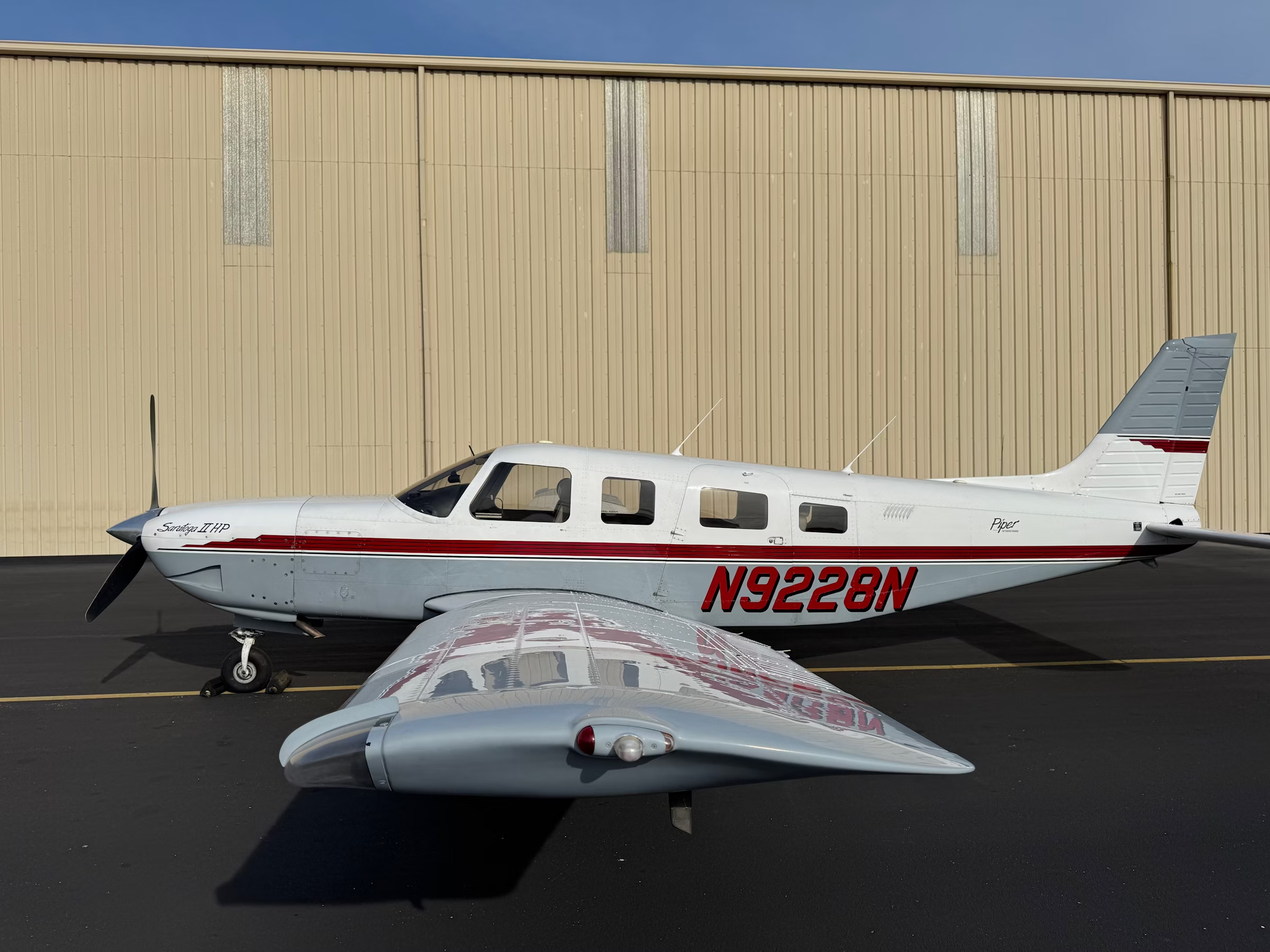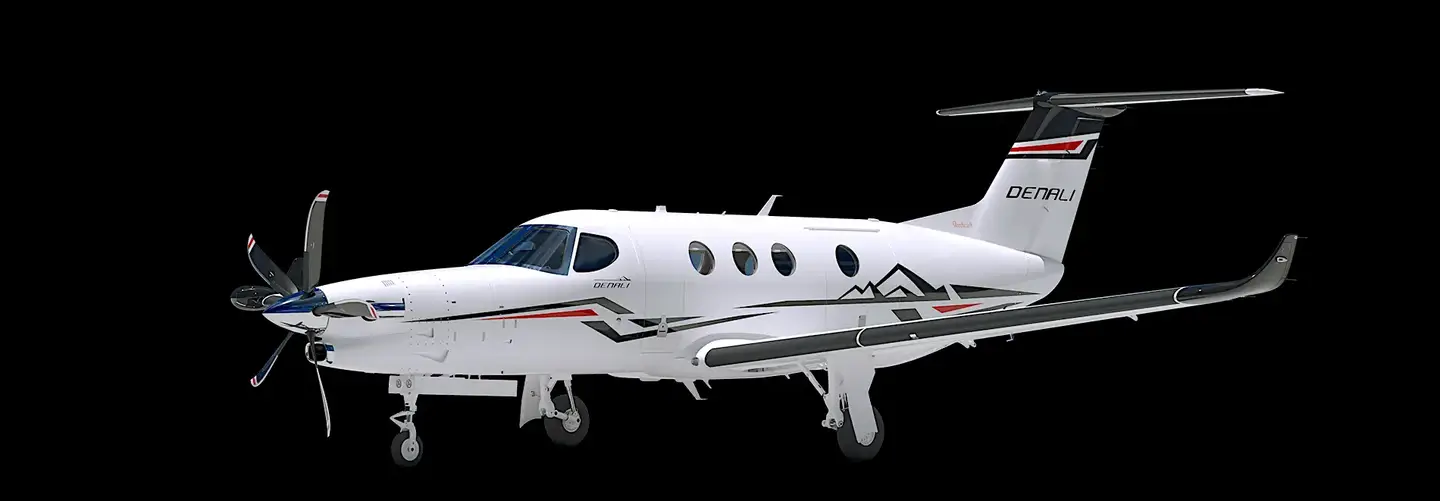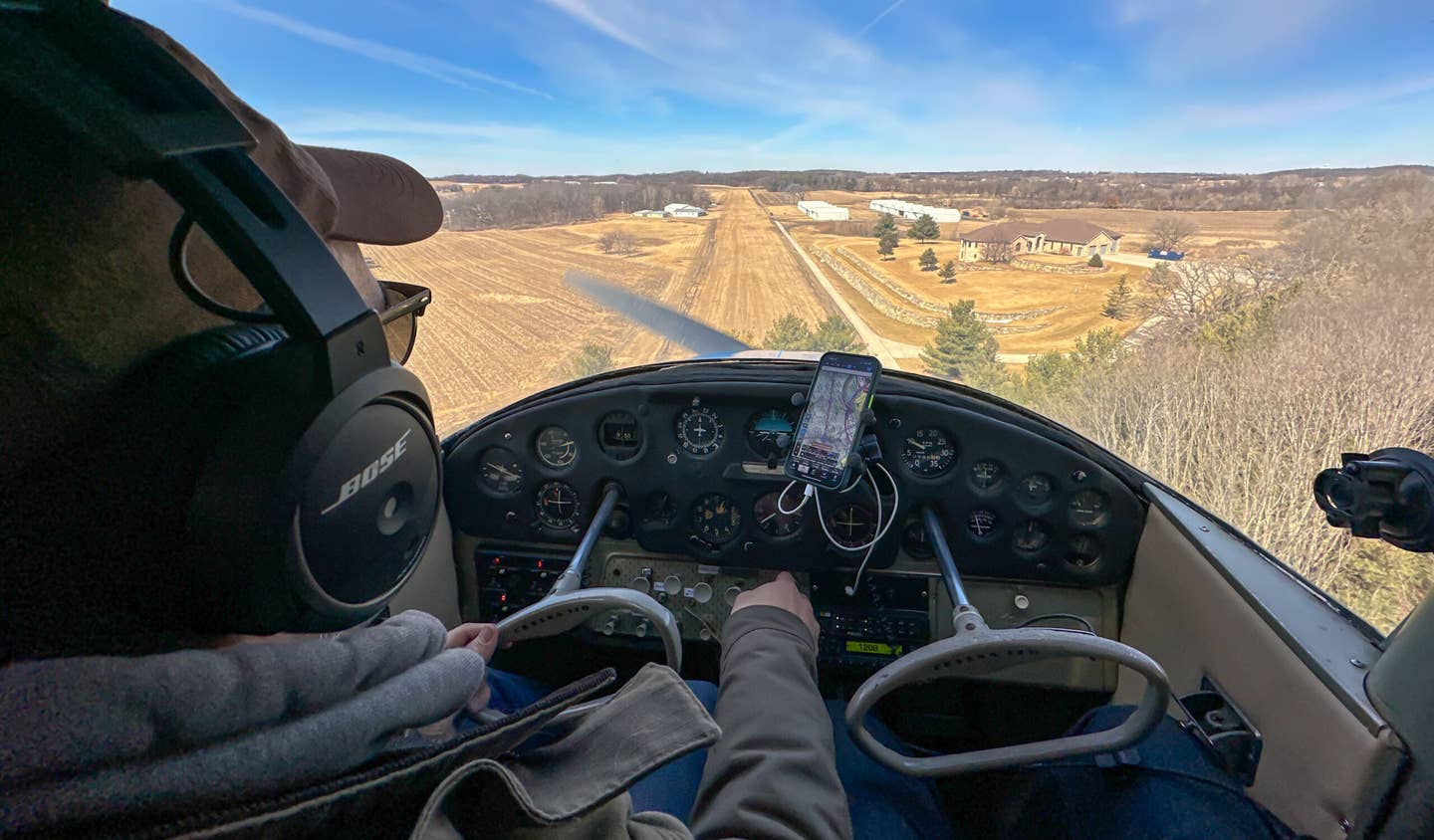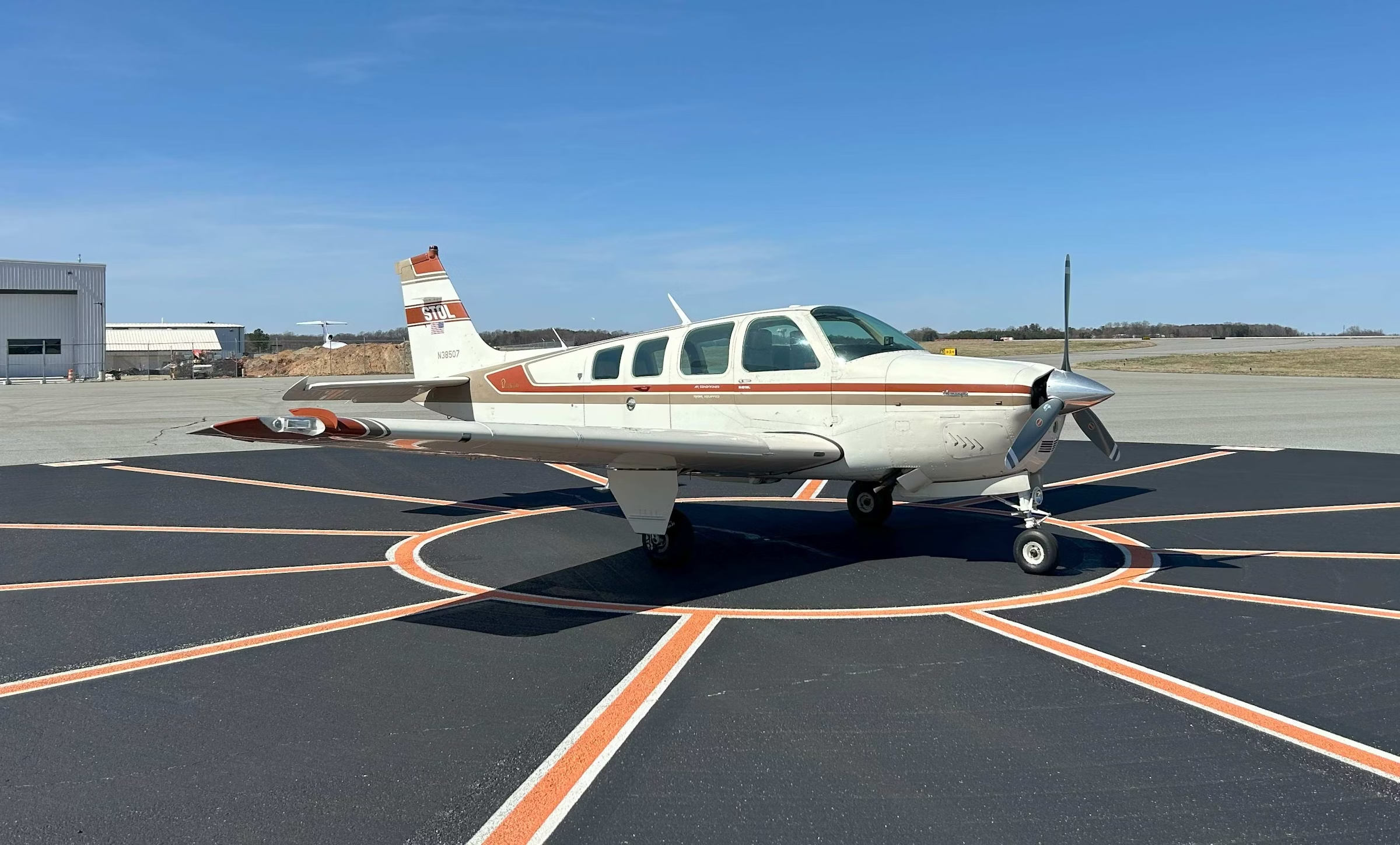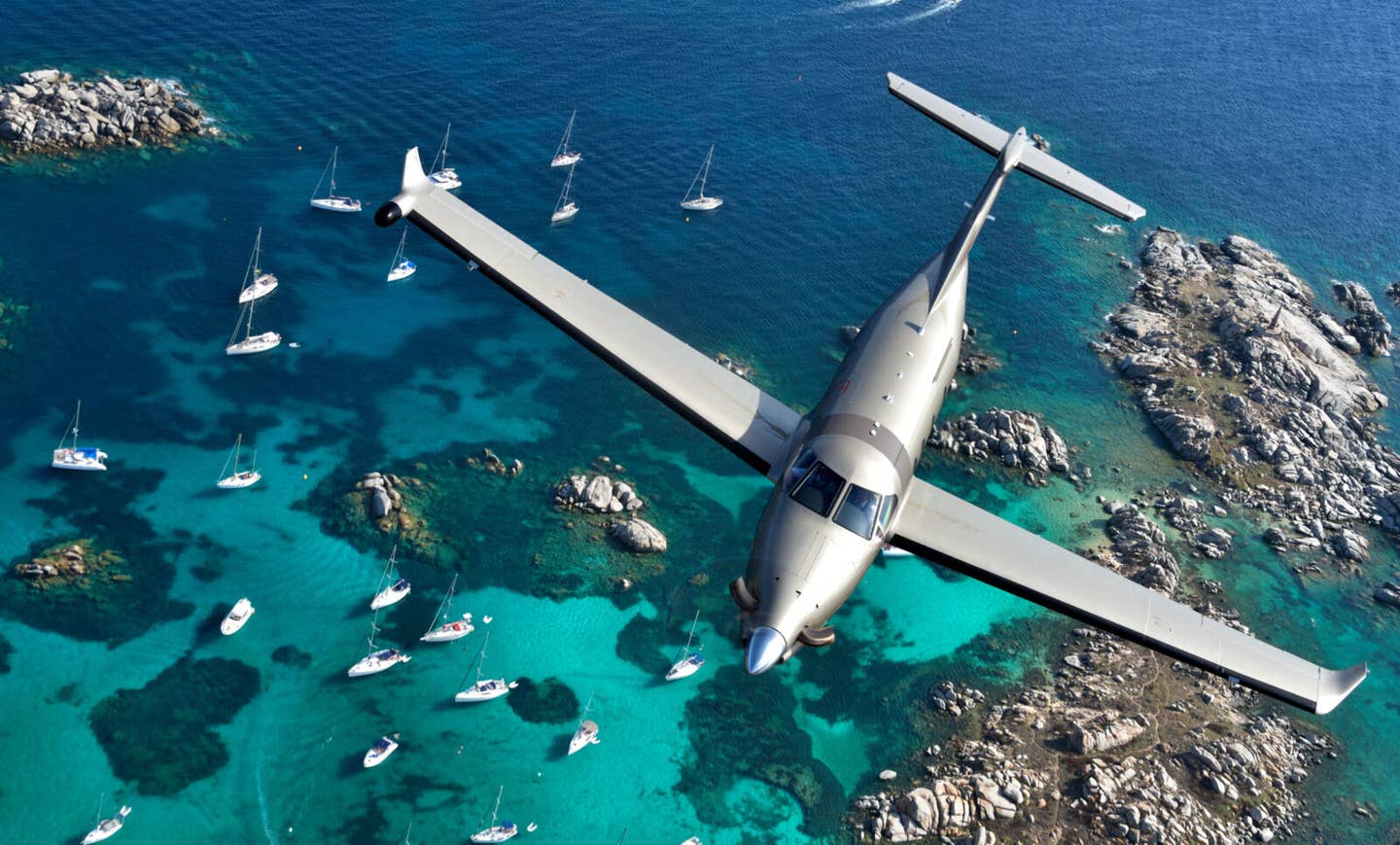
Dornier Seastar Courtesy of Dornier
What a world. I had just landed the Dornier Seastar flying boat in the Gulf of Mexico a few miles off the Florida coast. We shut down the engines and were sitting on top of the Seastar cabin enjoying the view and wishing for a fishing pole when Dornier Seaplane Co. CEO Joe Walker called the chairman, Conrado Dornier, on his cell phone.
Conrado was somewhere in Europe when he answered his phone, and his first comment to me about the Seastar was "That is one terrific boat you have under you." That struck me, as an airplane guy, as the most revealing aspect of the Seastar. It is a good boat that flies, not an airplane that has been adapted to the water. And that makes all the difference in the world when you are miles from shore.
Conrado knows a thing or two about flying boats because the company that bore his family name has been building them for nearly 100 years. Before World War II, Dornier Aircraft built huge flying boats capable of crossing oceans nonstop. In all, it is believed at least 1,000 seaplanes have borne the Dornier name.
The flying boat business ended for Dornier — and soon for everybody else — after the war, but the knowledge and heritage of seaplanes stayed in the family. When fiberglass became a viable material for building boats, and flying boats, Dornier realized what this material could do to make seaplanes practical, and the Seastar concept was born.
The bane of floatplanes and flying boats is corrosion and leaks. Seawater relentlessly attacks the metals used to make conventional airplanes. Even with maximum maintenance and regular freshwater baths, an airplane operated on salt water must undergo a total overhaul with many parts replaced every two or three years. And the pounding involved in water operations will open the tightest riveted metal seams, creating leaks, so the floats and hull will need constant pumping to stay somewhat dry.
Fiberglass, in contrast, is corrosion-proof. And seamless construction of a fiberglass hull keeps water out of the bilge.
Dornier began development of the fiberglass Seastar in the early 1980s and by 1991 had FAA, as well as German, certification. Ownership of the Dornier Aircraft Co. passed from the family not long after, but the Seastar project was not sold with the other assets. The flying boat project was put on hold. Just more than a year ago, Conrado Dornier contacted Joe Walker, who has headed up sales for Gulfstream and Citation, to see if there was a market for the Seastar. Joe quickly found that the answer is yes.
In addition to a long track record of success selling airplanes, Walker had also done a stint with airplane startup manufacturer Adam Aircraft, where he learned a great deal about the challenges of building composite airplanes. He has a unique background for the Seastar program.
There are about 500 turbine-powered floatplanes in service around the world and about 4,000 piston airplanes operating on floats. Clearly, there is a requirement for airplanes that can operate from water, but floatplanes are a compromise. Each was designed to fly from runways and was later adapted to floats, so the original design tradeoffs were made in favor of runway operations.
The Seastar, on the other hand, was designed as a flying boat. While a floatplane has a very high vertical center of gravity, the Seastar's is low. All fuel in the Seastar is carried in the sponsons instead of the wings as in other airplanes, so the fuel weight is low. The Pratt & Whitney PT6 turboprop engines push and pull from their location in a single pod mounted on the center of the wing. That keeps engine weight central to reduce rolling moments. The central engines are also protected from virtually all water spray by the hull. Unlike on floatplanes, where the props spin in a steady stream of spray, there was no erosion on the Seastar propellers. I could run my fingers over the leading edge of the blades without fear of a gash, something not recommended on a floatplane propeller.
The sponsons also add to stability on the water and to a quick jump up onto the step for takeoff or taxi. The inboard sections of the sponsons are submerged when the Seastar is on the water, and their shape adds a great deal of lift as the hull accelerates. There is a step on each sponson to break the water surface tension. The sponsons also provide space for the main landing gear, so the retraction mechanism is simple compared with other flying boats that rotate the gear up to snuggle into the hull.
The Seastar hull shape is very complex, with lots of angles and several steps. Dornier conducted extensive tank testing and then, in flight tests, experimented and found new hull shapes that were superior to the original design. The hull on Seastar No. 2, which was the certification article and is the airplane flying now, has been recontoured from the original.
There is a good-size pilot door on the left side for exit and entry from the sponson. Passengers board through a hatch aft of the wing by stepping in from the sponson. It is easy to bring a boat or unobstructed dock alongside and step on and off the sponson.
The Seastar cabin is big, nearly six feet longer than a Cessna Caravan on floats and more than a foot longer than a King Air 200. The Seastar can be configured to carry up to 12 plus crew in high-density seating or six to nine in more luxurious arrangements. There is an aft baggage compartment.
The landing gear can be removed to make the Seastar a pure floatplane and then later reinstalled without modifications. The hull draws about two feet with the gear up and four feet with the wheels down. It is possible to beach the Seastar, but you need to be sure you know the condition of the bottom because rocks or coral could damage the hull just as on any boat. An ideal arrangement for going ashore is to lower the gear while in the water and taxi up a ramp.
I have flown only one larger flying boat — a Grumman Mallard converted to turboprop power — and was not exactly sure what to expect from the Seastar. The cockpit is quite conventional with the power controls mounted on a center pedestal instead of overhead as on many seaplanes. The one unusual cockpit feature is a gaggle of gear warning lights. Because you need to know the position of the landing-gear doors, as well as the gear itself, before a water landing, there are lights to show the open or closed status of each of the six gear doors in addition to the landing gear.
Landing on water with the wheels down is the one unforgivable, and maybe unsurvivable, mistake in water operations. In fact, the first Seastar was lost when the test pilots forgot and touched down on the water with the wheels down. The airplane sank, but the crew escaped.
To help prevent that from ever happening again, the Seastar has a water mode for the landing gear. Pressing the button to engage water mode locks out gear extension and disables the normal gear-up warning horn that would sound during land operations.
Seastar chief pilot Grady Washatka, who has spent several years flying floatplanes in island airline operations, offered to demonstrate the first takeoff and landing, and then I would have a go. Great idea.
Engine operation is just like any other PT6 except there is no asymmetric thrust. The aft engine apparently has a more efficient air induction system because it can consume a little more fuel and thus produce more power, but that seems to be the only difference. The engines each rotate in the same direction, but because they are mounted facing opposite directions, the propellers actually counterrotate. This setup appears to function in the slipstream the same way a stator does in a turbine engine.
Visibility from the cockpit is excellent, though the seating position is low even on the runway and even more so on the water. The Seastar seems at home at the lower altitudes where airspeed is 160 to 170 knots, though the certified ceiling is 15,000 feet. There is, of course, no cabin pressurization. The engines are the same dash number as used in the King Air 90, and fuel flows at the lower altitudes are 500 to 600 pph total.
The Seastar program is presently based in Punta Gorda, Florida, where Charlotte Harbor and the Gulf offer huge areas for water operation. The breeze was light, so there was only a small chop on the harbor when Grady extended the flaps and slowed to about 100 knots for the water landing approach. Bringing the props up to takeoff rpm bled off more airspeed, and the Seastar settled onto the surface after skipping lightly twice on the chop. It looked easy.
For the water takeoff, you hold the wheel full aft, bring in the power, and the Seastar's nose rears up. In three or four seconds the hull climbs up onto a plane and the nose drops, giving you an unobstructed view for the takeoff run. With a final skip and hop off the small waves, the Seastar climbed away with only a small nose-up attitude.
Now it was my turn. Being a passionate sailboat racer I found it easy to "read" the water to determine the wind direction. The approach is really just aiming into the wind and allowing the Seastar to settle in ground effect — or is that water effect — and then holding it there as you bring the power back and allow the hull to settle onto the surface. The visibility over the nose is so good I had no difficulty judging the correct attitude, and the landing worked out fine. I tried several more and found the Seastar to be amazingly easy to handle.
We headed out into the open Gulf where, after landing, I tried some fast "step" taxiing. With full aileron and as much rudder as I could push, I couldn't get the wingtip down to the surface even though the airspeed climbed to near 30 knots. The Seastar has that dramatically swept wingtip that was developed to cut drag on the Dornier 228 commuter airliner and now works to prevent the tip from digging into the water if it does touch. With that tip design and its powerful lateral stability on the water, the Seastar does not need floats at the tip as other flying boats do.
As we headed back to the airport, the typical Florida afternoon thunderstorms had kicked up over the harbor and the gusts built waves up to a couple feet. It was a chance to see the Seastar in rougher conditions. Touching down on the bigger waves provides more of a jolt, but by reversing the props you slow very quickly and the Seastar settles off of the "step" instead of pounding into the waves for a long distance.
One thing I noticed flying with Grady was that, as soon as the Seastar was down and under control on either water or runway, he immediately unbuckled his harness. Unbuckling the belts is the last thing we landlubber pilots usually do after engine shutdown, but on the water you have to be ready to jump out to help with docking. Or, in a less capable seaplane than the Seastar, you don't want to be buckled in if the thing starts to sink and you need to make a quick exit.
The company has orders for more than 60 Seastars. Customers include high-worth individuals who own waterfront homes or yachts; island resort properties that need to shuttle guests; and governments that need to patrol and serve far-flung island and coastal areas. The price is about $6 million. That is more than a Caravan or Twin Otter on floats, but the Seastar can do much more. A helicopter with similar load-carrying capacity would cost more than a Seastar to buy and significantly more to operate.
Because the Seastar was originally certified in Europe using the wet-layup fiberglass construction technique, the basic airframe will be built there, as the authorities are familiar and comfortable with the process. The location of the Seastar Company headquarters where final assembly will take place has not yet been determined but will probably be in Florida or Alabama.
There are risks in any new airplane project and especially when a startup company produces it, but they are lower for the Seastar. First, the airplane already has a type certificate. Second, the management is realistic about the pace at which production can be accelerated. And third, there is the heritage of 100 years of Dornier flying boats. And the Seastar is one nice boat that flies.

Sign-up for newsletters & special offers!
Get the latest FLYING stories & special offers delivered directly to your inbox


